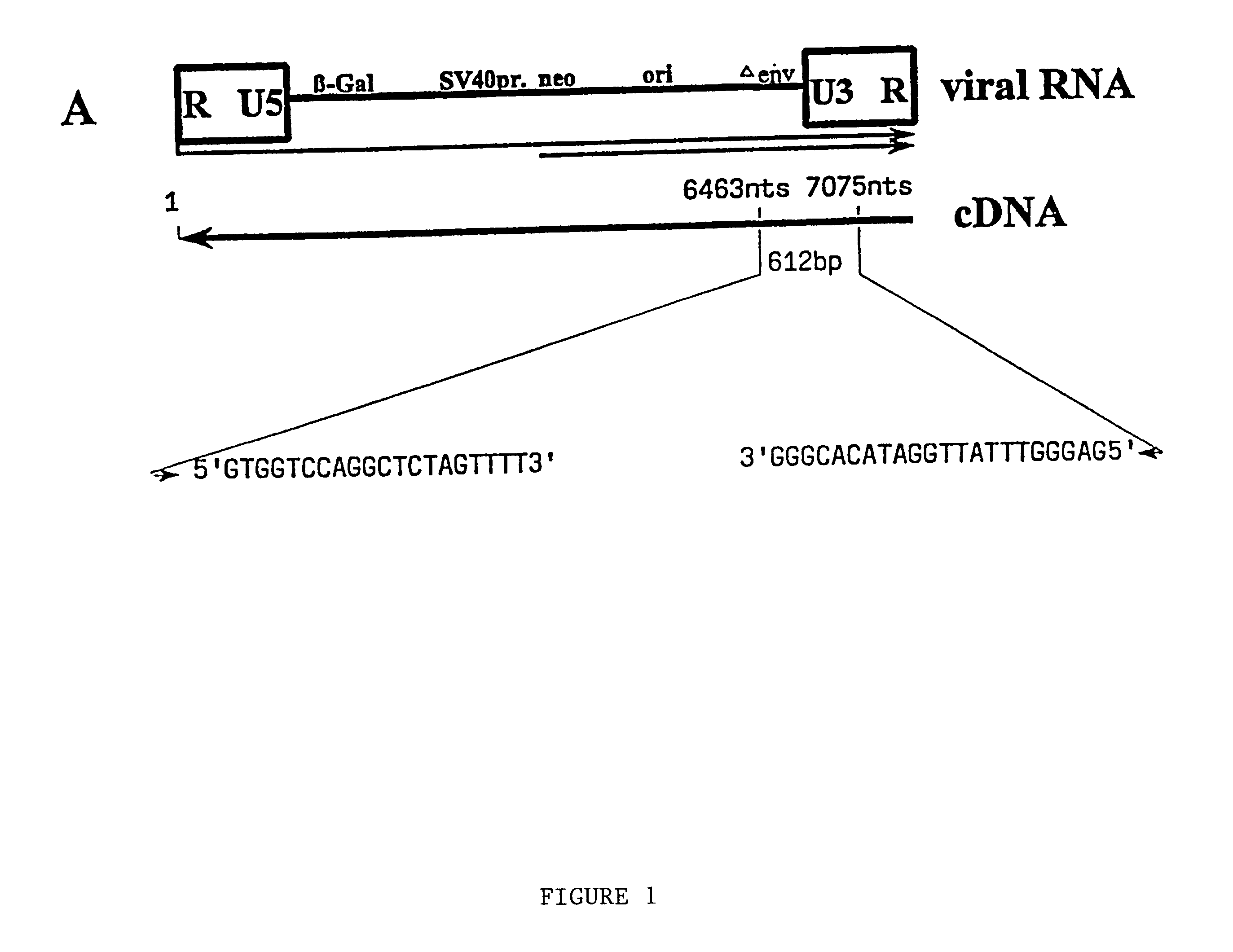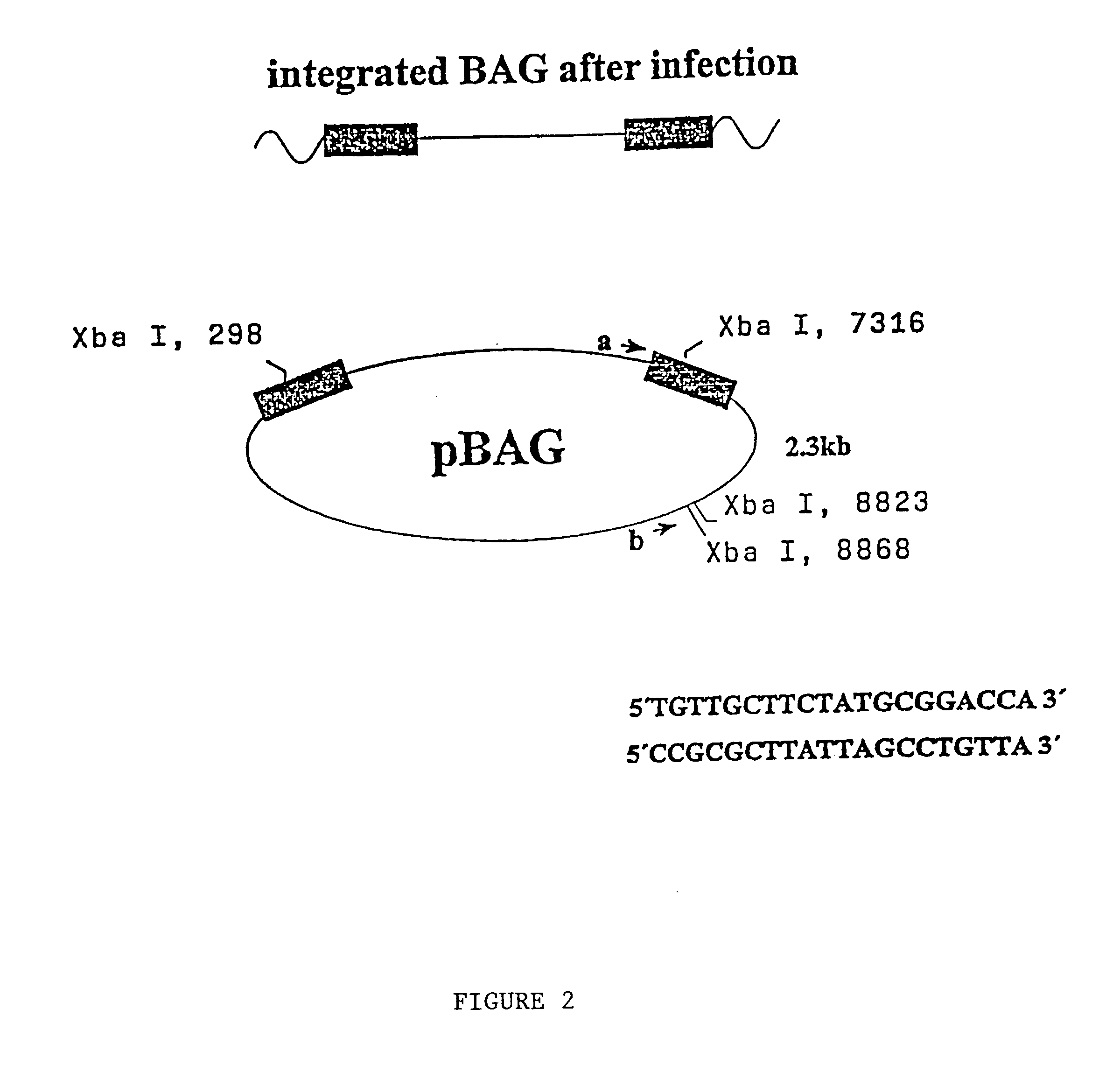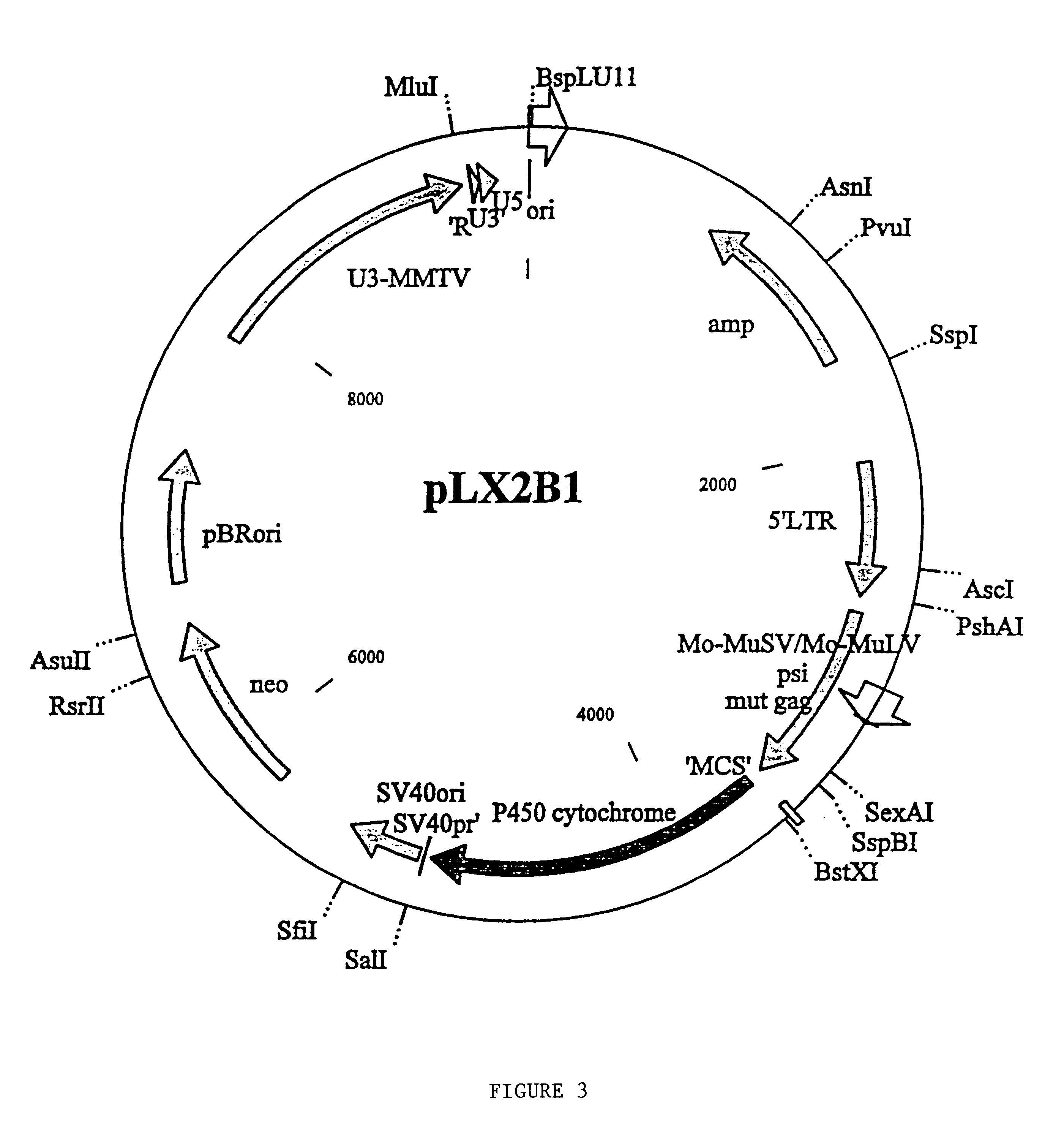Encapsulated cells producing viral particles
- Summary
- Abstract
- Description
- Claims
- Application Information
AI Technical Summary
Benefits of technology
Problems solved by technology
Method used
Image
Examples
example 2
Microencapsulation
10.sup.7 cells were suspended in 1 ml of a buffered saline solution containing 2-5% sodium cellulose sulfate and 5% fetal calf serum and the suspension dropped using a dispensing system (air-jet system) into a precipitation bath containing 2-3% polydimethyl-diallylammonium in buffered saline. Capsule formation occurred within milliseconds followed by further constitution of an inner, more porous, layer for mechanical support essentially consisting of cellulose sulfate. The capsule containing cells are kept in the precipitation bath for 30 seconds to 5 minutes and then washed in DMEM (Stange, J. et al., Biomat. Art. Cells & Immob. Biotech., 21:343-352 (1993)). Batches obtained to different parameters as described above, i.e., concentration of sodium cellulose sulfate, flow of air-jet system and time in precipitation bath were used for biological studies. Representative examples of conditions are for example: 2.5% sodium cellulose sulfate, 2% polydimethyl-diallylammo...
example 3
Implantation of Microcapsules into the Mammary Gland of Mice
The microcapsules were inserted into the mammary gland of female 2 month old BALB / c mice by "key hole" surgery and the entry site closed by 1 suture. Up to six capsules of 0.5-2 mm diameter were inserted at each operation site.
In vitro studies of virus release from the microcapsules, the structure of the microcapsules and the effect of the capsule implantation into immunocompetent mice were studied using the following test methods:
A) .beta.-galactosidase Activity
Detection of infected cells by histochemical staining was performed as outlined previously (Cepko, C., Meth. Neurosci., 1:367-392 (1989)). The cells, capsules or tissue sections were washed with chilled PBS and then fixed with a 2% paraformaldehyde solution for 20 minutes-24 hours according to the thickness of the sample. After extensive washing with PBS, the cells, capsules or tissue sections were incubated in a solution containing the substrate X-gal (20 mM K.sub....
example 4
This example describes the construction of a retroviral expression vector for intratumoral infection which contains the gene for rat cytochrome P450 2B1.
Expression vector pLX2B1, shown in FIG. 3, was constructed by ligation of fragments obtained from plasmid pLX125 and pSW1 (Kedzie, K. M. et al., J. Biol. Chem., 266(33):22515-22521 (1991)). The plasmid pLX125 was linearized with HpaI and the resulting blunt ends dephosphorylated using calf intestine phosphatase. The DNA was purified by separation on a 1% agarose gel, excision and preparation using the Qiaquick protocol (Qiagen). After ethanol precipitation the DNA was resuspended in water.
The cloning vector pSW1 was digested with SmaI and HincII to yield two blunt ended fragments. The digestion mixture was separated on a 1% agarose gel. The shortest fragment (1.5 kb) containing the rat cytochrome P450 2B1 cDNA (Fuji-Kuriyama, Y. et al., Proc. Natl. Acad. Sci. USA, 79:2793-2797 (1982)) was excised and eluted using the Qiaquick DNA ex...
PUM
| Property | Measurement | Unit |
|---|---|---|
| Fraction | aaaaa | aaaaa |
| Fraction | aaaaa | aaaaa |
| Fraction | aaaaa | aaaaa |
Abstract
Description
Claims
Application Information
 Login to View More
Login to View More - R&D
- Intellectual Property
- Life Sciences
- Materials
- Tech Scout
- Unparalleled Data Quality
- Higher Quality Content
- 60% Fewer Hallucinations
Browse by: Latest US Patents, China's latest patents, Technical Efficacy Thesaurus, Application Domain, Technology Topic, Popular Technical Reports.
© 2025 PatSnap. All rights reserved.Legal|Privacy policy|Modern Slavery Act Transparency Statement|Sitemap|About US| Contact US: help@patsnap.com



